Metcalf
Expedition Leader
I through I would share some interesting tech I have been playing around with in the tire inflation game. While there are special valve stems on the market that use the bigger core from larger industrial or agricultural tires, I was wondering how restrictive a standard Shrader valve core really was when inside a normal valve stem. The answer is A LOT!
I found one of these Core Removal Tools that I believe was originally designed to be used on tire machines in tire shops generally speaking. While we commonly see removing the core for airing down a tire, I never had really seen a device for airing UP a tire this way.
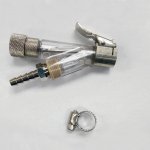
After some quick initial testing that proved there was something VERY interesting going on if you removed the core, I decided to build an 'Inflator' around this device. This was done by using the CRT chuck, a short flex hose, a Tee, a pressure gauge, a ball valve, and then a quick coupler that can be connected to the air hose.
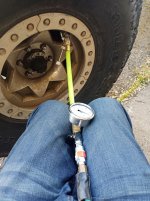
This device clips onto any normal 'car' size valve stem and allows both airing up or down. The inline gauge works quite well for monitoring tire pressure along the way without having to remove or swap anything. The liquid filled gauge I used is a little slower to respond, so I may swap that out for just a normal gauge.
Now it was time to do some testing.
I wanted to use the same tire and vehicle for all my testing, in this case, it was the 40x13.5R17 Milestar Patagonia MT Black Labels on my #LX45.
This test was run at the same pressure sweep....8 to 28psi which is my normal trail to road change.
Here are the initial results.
-Shop Air- blow through clip on chuck- Through a Jantz deflator - 8 to28psi - 75 seconds
-Shop Air - blow through clip on chuck - Through a standard core - 8to 28psi - 80 seconds
-Shop Air - CRT chuck inflator - Core removed - 8 to 28psi - 26 seconds
-Tozalazz - CRT chuck inflator - Core removed - 8 to 28psi - 115 seconds
-Puma - Blow through clip on chuck- Through a Jantz deflator - 8 to 28psi - 230 seconds
-Puma - CRT chuck inflator - Core removed - 8 to 28psi - 207 seconds
-ARB twin - clip on chuck- through core - 8 to 28psi - 210 seconds
-ARB twin - CRT chuck inflator - no core - 8 to 28psi - 160 seconds
-Shop air - LockNFlate chuck - through Jantz deflator - 8 -28psi - 70 seconds
-Puma - LockNflate chuck - Through core - 8 to 28psi - 225 seconds
-ARB Twin - LockNflate chuck - Through core - 8 to 28psi - 190 seconds
Notes:
-'Shop air' is my large 3-4hp garage compressor, 60 gallon tank regulated to 90-100psi and it will fill 2-3 tires before the compressor kicks on.
-'Tozalazz' is the new 'Napa' style twin cylinder compressor ( this was run only without the core and directly to the CRT inflator )
These are listed as 11.6cfm free flow
-'Puma' is mid size 3/4hp 12V compressor mounted in the LX45 full time with a small 1/2-3/4 gallon tank
This is rated at 2cfm at 40psi or 1.3cfm at 90psi (I would guess free flow is 4cfm)
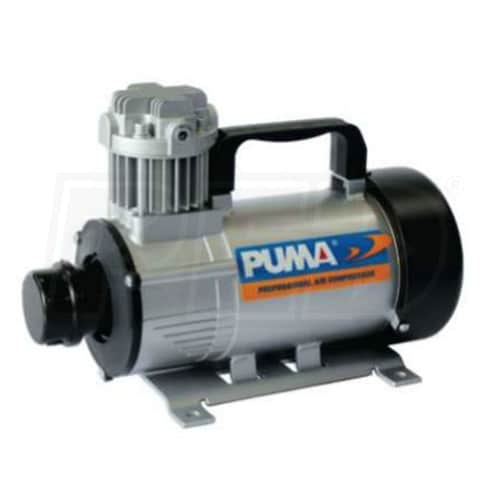
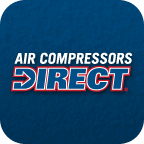 www.aircompressorsdirect.com
www.aircompressorsdirect.com
-ARB twin is the largest compressor from ARB and is mounted in my old Willys Jeep. with a small 1/2-3/4 gallon tank
This is rated at 6.16cfm free flow and 4.7cfm at 29psi
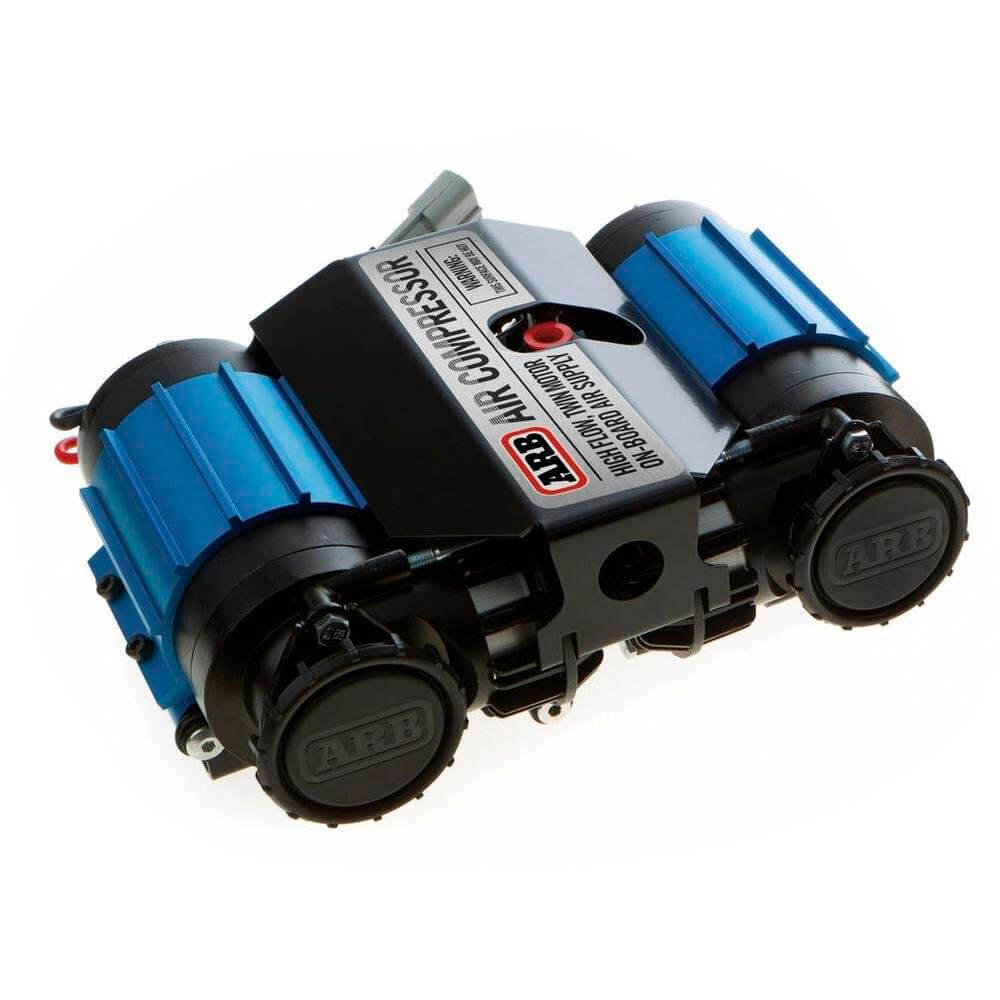
 www.grimmoffroad.com
www.grimmoffroad.com
Conclusion-
As flow increased, I saw a proportionally better decrease in air up times across all the various compressor flow rates.
My general feeling is that anything above 3-4cfm free flow would benefit from this. I was surprised how close the Puma and ARB twin was with the core still in place. I think that is a good example of the bottleneck of the core above a certain flow.
I also think that with 30-40+cfm it is possible to still use a normal small valve stem to great effect if you remove the core during the air up process.
Thoughts? Questions?
I found one of these Core Removal Tools that I believe was originally designed to be used on tire machines in tire shops generally speaking. While we commonly see removing the core for airing down a tire, I never had really seen a device for airing UP a tire this way.

After some quick initial testing that proved there was something VERY interesting going on if you removed the core, I decided to build an 'Inflator' around this device. This was done by using the CRT chuck, a short flex hose, a Tee, a pressure gauge, a ball valve, and then a quick coupler that can be connected to the air hose.

This device clips onto any normal 'car' size valve stem and allows both airing up or down. The inline gauge works quite well for monitoring tire pressure along the way without having to remove or swap anything. The liquid filled gauge I used is a little slower to respond, so I may swap that out for just a normal gauge.
Now it was time to do some testing.
I wanted to use the same tire and vehicle for all my testing, in this case, it was the 40x13.5R17 Milestar Patagonia MT Black Labels on my #LX45.
This test was run at the same pressure sweep....8 to 28psi which is my normal trail to road change.
Here are the initial results.
-Shop Air- blow through clip on chuck- Through a Jantz deflator - 8 to28psi - 75 seconds
-Shop Air - blow through clip on chuck - Through a standard core - 8to 28psi - 80 seconds
-Shop Air - CRT chuck inflator - Core removed - 8 to 28psi - 26 seconds
-Tozalazz - CRT chuck inflator - Core removed - 8 to 28psi - 115 seconds
-Puma - Blow through clip on chuck- Through a Jantz deflator - 8 to 28psi - 230 seconds
-Puma - CRT chuck inflator - Core removed - 8 to 28psi - 207 seconds
-ARB twin - clip on chuck- through core - 8 to 28psi - 210 seconds
-ARB twin - CRT chuck inflator - no core - 8 to 28psi - 160 seconds
-Shop air - LockNFlate chuck - through Jantz deflator - 8 -28psi - 70 seconds
-Puma - LockNflate chuck - Through core - 8 to 28psi - 225 seconds
-ARB Twin - LockNflate chuck - Through core - 8 to 28psi - 190 seconds
Notes:
-'Shop air' is my large 3-4hp garage compressor, 60 gallon tank regulated to 90-100psi and it will fill 2-3 tires before the compressor kicks on.
-'Tozalazz' is the new 'Napa' style twin cylinder compressor ( this was run only without the core and directly to the CRT inflator )
These are listed as 11.6cfm free flow
-'Puma' is mid size 3/4hp 12V compressor mounted in the LX45 full time with a small 1/2-3/4 gallon tank
This is rated at 2cfm at 40psi or 1.3cfm at 90psi (I would guess free flow is 4cfm)

Puma DE07 3/4-HP 12-Volt Continuous Duty Tankless Air Compressor
Buy Puma DE07 Direct. Free Shipping. Check the Puma 3/4-HP 12-Volt Continuous Duty Tankless Air Compressor ratings before checking out.
-ARB twin is the largest compressor from ARB and is mounted in my old Willys Jeep. with a small 1/2-3/4 gallon tank
This is rated at 6.16cfm free flow and 4.7cfm at 29psi

ARB Twin Air Compressor
Highlights: Extremely reliable compressor with high airflow Twin motors in integrated bracket assembly Up to 6cfm of airflow Can handle up to 150psi Compatible with ARB AirLockers Maximum 56amp draw Comes with wiring and switch Powerful Air Compressor with Extremely High Flow Rates If you're...
 www.grimmoffroad.com
www.grimmoffroad.com
Conclusion-
As flow increased, I saw a proportionally better decrease in air up times across all the various compressor flow rates.
My general feeling is that anything above 3-4cfm free flow would benefit from this. I was surprised how close the Puma and ARB twin was with the core still in place. I think that is a good example of the bottleneck of the core above a certain flow.
I also think that with 30-40+cfm it is possible to still use a normal small valve stem to great effect if you remove the core during the air up process.
Thoughts? Questions?
Last edited:



